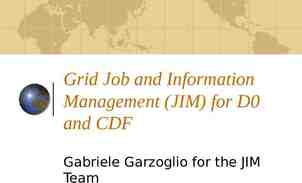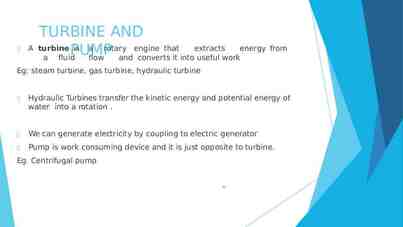Infection Prevention Risk Assessment Carol Bromley Biannual
16 Slides430.00 KB

Infection Prevention Risk Assessment Carol Bromley Biannual Conference Linda C Russell RN, BSN, CIC Infection Preventionist / Risk Manager Mat-Su Regional Medical Center Palmer, Alaska APIC Midnight Sun Chapter 65 President

Objectives The learner will be able to: Define the purpose of an Infection Control Risk Assessment Define infection control risk specific to their own organization Develop a basic infection control risk assessment utilizing the tool provided. Demonstrate how they will utilize the risk assessment tool on an ongoing basis to develop their facility specific risk assessment and infection control plan.

Why Do I Need a Risk Assessment Required by regulatory agencies The Joint Commission Center for Medicare and Medicaid Services State Regulatory Agencies Frequency required Annually Updated as conditions / risk change

Risk Assessment Definition A risk assessment is a tool used: to identify the risk at a specific facility to prioritize activities to eliminate, reduce or minimize the impact of the identified risk to develop the Infection Prevention and Control Plan

Who Performs Ideally the risk assessment is a joint endeavor Infection Preventionist Infectious Disease Physician Other Physicians Nurse Managers Administration Other Staff Members Community Members

How Do I Get Started Look at: Your facility’s historical data Data from your community National and world issues Outbreaks Threats New and emerging organisms

Categories of Risk to Review Infections in the hospital Procedural risk Compliance issues Exposures in the hospital

INFECTION CONTROL RISK ANALYSIS INFECTIONS IN THE HOSPITAL SEVERITY (MAGNITUDE - MITIGATION) PROBABILITY EVENT Likelihood these will be present in your patient population SCORE 0 N/A 1 Low 2 Moderate 3 High HUMAN IMPACT PROPERTY IMPACT Severity of this type infection Additional Cleaning / Isolation / Staffing Needs Due to this Infection 1 N/A 1 Low 2 Moderate 3 High 0 N/A 1 Low 2 Moderate 3 High BUSINESS IMPACT PREPAREDNESS INTERNAL RESPONSE Identification of Staff Knowledge / Increased length this disease / internal support of stay / cost to infection, Plan for of plan for this the facility due to caring for this particular disease this infection type patient / infection 0 N/A 1 Low 2 Moderate 3 High EXTERNAL RESPONSE RISK External Support for this type infection / disease- Public Health, Mutual Aid, Gov. Agencies, etc. Relative threat* to this facility 0 N/A 1 High 2 Moderate 3 Low or none 0 N/A 1 High 2 Moderate 3 Low or none 0 N/A 1 High 2 Moderate 3 Low or none 0 - 100% MRSA 2 3 3 3 2 2 3 59% VRE 2 3 3 3 2 2 3 59% Other MDROs 2 2 2 2 2 3 2 48% Tuberculosis 1 3 3 3 1 2 2 26% Hepatitis A 1 2 1 1 2 2 3 20% Hepatitis B 1 3 1 2 2 2 3 24% Hepatitis C 1 3 1 2 2 2 3 24% HIV 1 3 2 3 2 2 3 28% Enteric Organisms 2 2 1 1 1 1 2 30% C. difficile 2 3 3 3 2 2 2 56% Chickenpox 1 2 3 2 2 3 3 28% Measles 1 1 2 1 2 2 3 20% Mumps 1 1 2 1 2 2 3 20% Rubella Pertussis 1 1 2 2 2 1 2 2 2 2 2 1 3 3 24% 20% Epidemics / Pandemics 3 2 3 3 3 3 2 89% AVERAGE SCORE 1.44 2.31 2.06 2.13 1.94 2.06 2.69 35% *Threat increases with percentage. 23 211 RISK PROBABILITY * SEVERITY 0.35 0.48 0.73

INFECTION CONTROL RISK ANALYSIS PROCEDURAL ISSUES SEVERITY (MAGNITUDE - MITIGATION) PROBABILITY HUMAN IMPACT EVENT Likelihood this type infection / problems with this process will occur in our facility SCORE 0 1 2 3 N/A Low Moderate High Severity of this for the patient 0 1 2 3 N/A Low Moderate High PROPERTY IMPACT BUSINESS IMPACT PREPAREDNESS INTERNAL RESPONSE Additional Identification & Staff Knowledge Cleaning / Increased length of Prevention of this & compliance of Isolation / Staffing stay / cost to the disease / plan for Needs Due to this facility due to this infection / prevention of this Infection / infection / problem process problem particular Problem in place problem 0 1 2 3 N/A Low Moderate High 0 1 2 3 EXTERNAL RESPONSE RISK External Support/ Regulations for this type procedure problem - Public Health, CHS, Gov. Agencies, etc. Relative threat* N/A Low Moderate High 0 N/A 1 High 2 Moderate 3 Low or none 0 N/A 1 High 2 Moderate 3 Low or none 0 N/A 1 High 2 Moderate 3 Low or none 0 - 100% SSI's Bariatric Surgeries Open Cholecystectomies Total Knee Total Hip Hysterectomies Robot Assisted Procedures 1 1 1 1 1 1 3 3 3 3 3 3 1 1 1 1 1 1 3 3 3 3 3 3 1 1 1 1 1 1 2 2 2 2 2 2 3 3 3 3 3 3 24% 24% 24% 24% 24% 24% Vent-related Pneumonias ICUs 1 3 2 3 2 2 3 28% CatheterAssociated UTI's 2 2 1 3 2 2 3 48% Central Lines Associated Blood Stream Infections 1 2 1 3 2 2 3 1 1 3 3 1 2 3 3 1 1 2 1 2 2 22% 22% 2 2 1 2 1 2 2 37% 1 2 2 3 1 2 2 22% 2 2 1 2 1 2 3 41% 1.21 2.64 1.21 2.86 1.21 1.93 2.71 28% Equipment Related Infections: Endoscopes Central Sterilization Environmental Related Infections Environmental Cleaning & Disinfection including equipment C difficile Environmental Measures Construction and compliance with required ICRA Measures AVERAGE SCORE *Threat increases with percentage. 17 176 RISK PROBABILITY * SEVERITY 0.28 0.40 0.70

INFECTION CONTROL RISK ANALYSIS COMPLIANCE ISSUES SEVERITY (MAGNITUDE - MITIGATION) PROBABILITY EVENT Likelihood noncompliance with this will occur SCORE 0 N/A 1 Low 2 Moderate High 3 HUMAN IMPACT PROPERTY IMPACT Possibility of infection to related to noncompliance Additional resources needed if noncompliance occurs 0 1 2 3 N/A Low Moderate High 0 1 2 3 N/A Low Moderate High BUSINESS IMPACT PREPAREDNESS Noncompliance could lead to Monitoring for increased length of compliance of this stay, litigation, cost process in place to the facility 0 1 2 3 N/A Low Moderate High INTERNAL RESPONSE EXTERNAL RESPONSE External agencies Internal support to that encourage increase comliance with this: compliance with OSHA, JCAHO, this CDC, etc. RISK Relative threat* 0 N/A 1 High 2 Moderate 3 Low or none 0 N/A 1 High 2 Moderate 3 Low or none 0 N/A 1 High 2 Moderate 3 Low or none 0 - 100% Hand Hygiene 2 3 2 3 1 1 1 41% Isolation Procedures 2 3 2 3 1 1 1 41% 2 3 2 3 1 1 1 41% 1 2 2 2 1 2 2 20% TST Compliance 1 2 1 2 1 1 1 15% Immunization Compliance 1 2 2 2 1 1 1 17% Fit-testing Compliance 2 2 1 2 1 1 2 33% AVERAGE 1.57 2.43 1.71 2.43 1.00 1.14 1.29 29% Sterilization Processes Skin Antisepsis for Vascular Lines & Blood Cultures Employee Health: *Threat increases with percentage. 11 RISK PROBABILITY * SEVERITY 70 0.29 0.52 0.56

INFECTION CONTROL RISK ANALYSIS EXPOSURES IN THE HOSPITAL SEVERITY (MAGNITUDE - MITIGATION) EVENT PROBABILITY HUMAN IMPACT PROPERTY IMPACT BUSINESS IMPACT Exposure could Severity to Additional lead to increased Likelihood this type employee / resources needed if length of stay, exposure will occur patient if this this exposure litigation, cost to exposure occurs occurs the facility (worker's comp) SCORE 0 1 2 3 N/A Low Moderate High 0 1 2 3 N/A Low Moderate High 0 N/A 1 Low 2 Moderate 3 High 0 1 2 3 PREPAREDNESS Prevention / Identification of Exposure in place INTERNAL RESPONSE EXTERNAL RESPONSE Outside support if Staff knowledge this type exposure of prevention occurs: CDC, measures for this CHS, Mutual Aids, type of exposure Gov. Agencies, & internal support Exposure Hotline, if it occurs etc. RISK Relative threat* N/A Low Moderate High 0 N/A 1 High 2 Moderate 3 Low or none 0 N/A 1 High 2 Moderate 3 Low or none 0 N/A 1 High 2 Moderate 3 Low or none 0 - 100% Sharps Injuries Hepatitis B Hepatitis C HIV Infectious Disease Exposures 1 1 1 3 3 3 1 1 2 2 2 3 1 1 1 2 2 2 2 2 2 20% 20% 24% Tuberculosis Hepatitis A Chickenpox Measles Mumps Rubella Pertussis Outbreaks (Internal) Epidemic (Influx of Infectious Patients External) Bioterrorism Event 1 1 1 1 1 1 1 2 2 1 2 1 1 2 2 2 2 1 3 2 2 2 1 3 2 1 2 1 1 2 2 1 1 1 2 2 2 2 2 2 1 2 2 2 2 2 1 2 1 1 1 1 1 1 1 3 17% 13% 22% 17% 17% 20% 17% 48% 2 3 3 3 3 2 2 59% 2 1.23 3 2.15 3 2.00 3 1.92 2 1.69 2 1.85 2 1.54 56% 25% AVERAGE *Threat increases with percentage. 16 145 RISK PROBABILITY * SEVERITY 0.25 0.41 0.62

Infection Hazards Procedural Hazards Compliance Exosures Total for Facility SUMMARY OF Hospital IC RISK ANALYSIS Probability 0.48 0.40 0.52 0.41 0.41 Severity 0.73 0.70 0.56 0.62 0.62 Hazard Specific Relative Risk: 0.35 0.28 0.29 0.25 0.26 Infection Control Relative Risk to Hospital Relative Threat to Facility 1.00 0.80 0.60 0.40 0.20 0.00 Infection Hazards Procedural Hazards Compliance Exosures Probability and Severity of Hazards to Hospital Relative Impact on Facility 1.00 0.80 0.60 0.40 0.20 0.00 Probability Comments on Findings: Severity IC Risks and Preparedness identified with the highest relative risk at our facility were: 1) Epidemic / Pandemic (2009 H1N1) (89%); Influx of infectious patienrs (59%), MRSA transmission (59%); VRE transmission (59%) were the top four risk identified. 2) C Difficile transmission (56%) and Bioterrorism Event (56%) were the next two highest risk to the organixation. 3) Catheter Associated Urinary Tract Infections (48%) and Internal Outbreaks (48%) (such as 2009 H1N1) and other MDROs (48%) ranked third 4) Other risk ranking over 40% include Construction and compliance with required ICRAs, Hand Hygiene Compliance, Isolation Compliance, and Sterilization Processes each ranked (41%) 5) Compliance with Fit-Testing scored (33%), Surgical Site Infections ranked 24% across the board.

Hands On Exercise Using the Hand out of Risk Assessment Tool We will do an example together using one or more facilities information to develop a risk assessment.

Infection Prevention and Control Plan Use the risk assessment to prioritize the issues, focus your efforts for reduction of infections in your facility. A sample IP&C plan is included on your CD.

Review A risk assessment is used to identify your facility’s risk of infections. The risk assessment forms the framework for the Infection Prevention and Control Plan The assessment and plan should be reviewed annually and any time there is a change in conditions / risk. The template presented is a simple tool for performing a risk assessment.

Contact Information Linda C Russell RN, BSN, CIC Infection Preventionist / Risk Manager Mat-Su Regional Medical Center Phone - 907-861-6674 E-Mail: [email protected]






